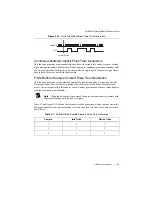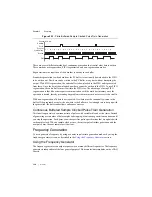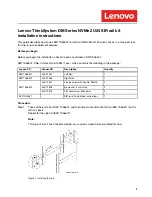
© National Instruments
|
5-15
NI cDAQ-9181/9184/9188/9191 User Manual
Divide down (
N
)
is the integer to divide down measured frequency, only used in
large range two counters
fs
is the sample clock rate, only used in sample clocked frequency
measurements
Here is how these variables apply to each method, summarized in Table 5-2.
•
One counter
—With one counter measurements, a known timebase is used for the source
frequency (
fk
). The measurement time is the period of the frequency to be measured, or
1/
fx
.
•
Two counter high frequency
—With the two counter high frequency method, the
second counter provides a known measurement time. The gate frequency equals
1/
measurement time
.
•
Two counter large range
—The two counter larger range measurement is the same as a
one counter measurement, but now the user has an integer divide down of the signal. An
internal timebase is still used for the source frequency (
fk
), but the divide down means that
the measurement time is the period of the divided down signal, or
N
/
fx
where
N
is the divide
down.
•
Sample clocked
—For sample clocked frequency measurements, a known timebase is
counted for the source frequency (
fk
). The measurement time is the period of the sample
clock (
fs
).
Table 5-2.
Frequency Measurement Methods
Variable
Sample Clocked
One
Counter
Two Counter
High
Frequency
Large Range
fk
Known timebase
Known
timebase
Known timebase
Measureme
nt time
gating period
Max.
frequency
error
fk
Max. error
%
Note
: Accuracy equations do not take clock stability into account. Refer to the specifications document
for your cDAQ chassis for information about clock stability.
1
gating period
-------------------------------
1
fs
----
1
fx
----
N
fx
----
fx
fx
fk
fx
fs
----
1
–
×
-------------------------------
×
fx
fx
fk fx
–
---------------
×
fx
fx
N fk fx
–
×
-------------------------
×
fx
fk
fx
fs
----
1
–
×
-------------------------------
fx
fk fx
–
---------------
fk
fx
----
fx
N fk fx
–
×
-------------------------















































